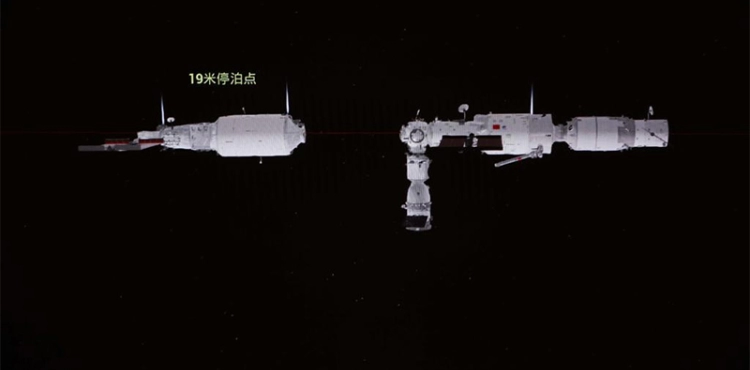Astronauts entered for the first time Monday the new laboratory module of the Chinese space station , in a major step towards completing the orbital position by the end of the year.
This station is one of the most important pillars of Beijing´s ambitious space program, which included sending robotic vehicles to Mars and the Moon, and made China the third country to send human crews into Earth orbit.
Once complete, the Tiangong - or "Heavenly Palace" - will be constantly staffed with rotating teams of three astronauts, who will conduct scientific experiments and help test new technologies.
State media reported that the Wentian, the second of the three main sections of Tiangong, was linked to the main unit of the Tianhe station on Monday, a day after it was successfully launched from southern China.
A few hours after docking, the three astronauts, who have been living in the base unit since June, opened the hatch and entered Wentian, according to footage shown by state-run CCTV.
The crew, dressed in a blue suit, was seen circling the brightly lit unit before facing the camera and saluting.
Wentian will focus on life sciences and biotechnology research, according to the official Xinhua (New China) agency, including cell research and growth experiments on plants, fruit flies and zebrafish.
State media said the unit will have room for three additional astronauts, and will accommodate up to six people during crew transfers.
The third and final unit, another laboratory named "Mingtian", is scheduled to be launched in October.
The Tiangong station, once completed, is expected to remain in low orbit at an altitude of 400 to 450 kilometers above Earth for at least 10 years.
Next year, China also plans to launch a space telescope with a field of view 350 times greater than the NASA´s Hubble Space Telescope.
The telescope will be placed in the same orbit as the Tiangong station, allowing the station to dock with it for refueling and servicing when needed.
China has spent billions of dollars on spaceflight and exploration as it seeks to build a program that reflects its position as a rising global power.
The program has achieved rapid success in the past two decades, including the launch of China´s first astronauts, the historic first landing on the dark side of the moon, and the dispatch of a rover to the surface of Mars.












